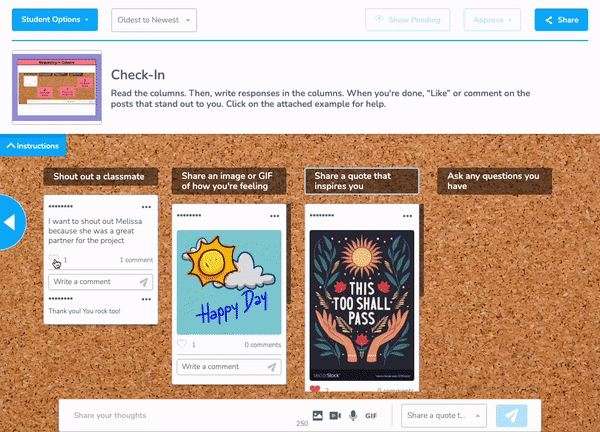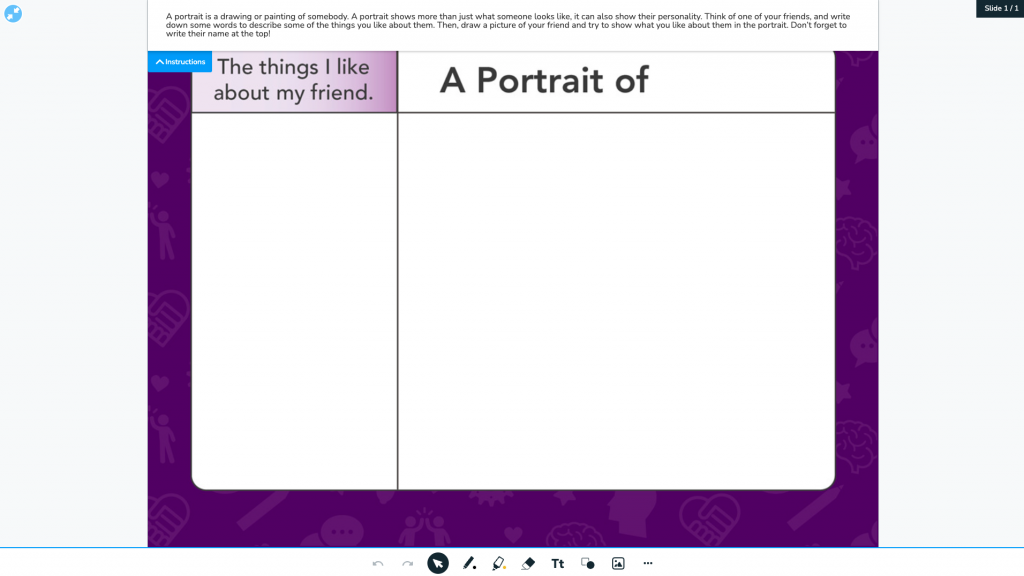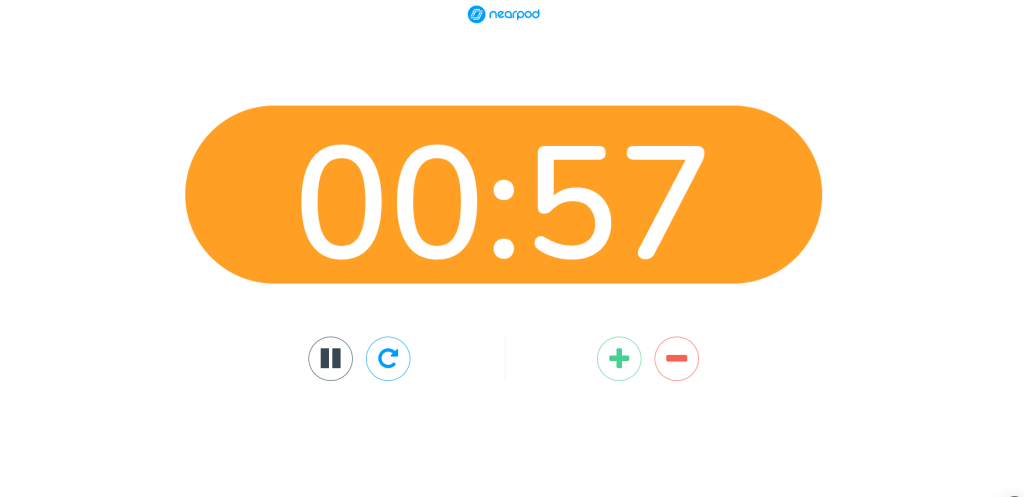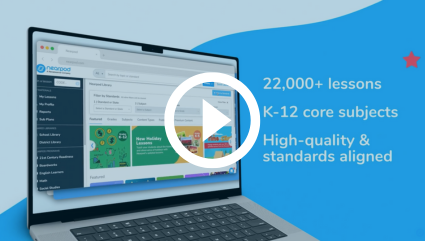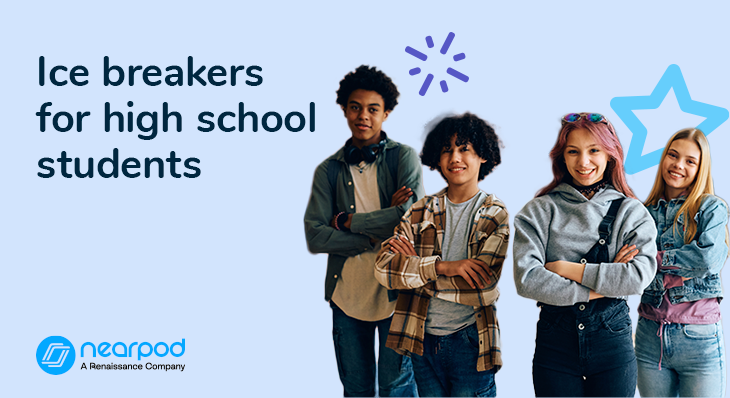
Icebreakers for high school students that will actually engage them
We’ve rounded up some great icebreakers for high school students to help ease those first-day-of-school apprehensions! We all can think back to those good ol’ high school days and the awkwardness that can come with meeting new teachers and new classmates. Whether it’s the first day at a new school or even just a new grade, the unknown of what lies ahead can cause insidious anxieties. Yet, all educators aspire to begin building classroom camaraderie from day one to contribute to a positive school culture.
And icebreakers are not just for the first week of school. High school icebreakers can be instrumental in bringing students back together after school holidays and vacations. Icebreaker activities can help students regroup when attention or energy wanes during the school day. They can also encourage teamwork while injecting a bit of classroom spirit among your students at any given point. Icebreakers are designed to be energizing and playful, in order to build that all-important connection in your classroom community.
Why do icebreakers for high schoolers?
Icebreakers are a great way to start building a positive high school classroom community, which is a key goal for any new school year. And this sense of community starts with developing a foundation of mutual respect for one another. Creating those concrete connections takes effort and time, but it’s important to establish these interpersonal relationships in order to build trust and rapport between you and your students, as well as between students. Research has shown that a positive and strong classroom climate and culture can encourage students to be more invested, engaged, and successful during the school day. Strong peer connections can help students stay motivated while building lifelong skills around collaboration, cooperation, and communication. Plus, using icebreakers for teens is simply a fun and spirited way to promote student engagement, both physically and mentally!
Nearpod offers an engaging way to bring these icebreaker activities for high school students to life, helping teachers facilitate meaningful connections through technology that resonates with today’s high schoolers. The platform’s interactive features transform traditional icebreakers into dynamic experiences where all students can participate, even those typically reluctant to speak up. By incorporating Nearpod into your community-building toolkit, you can gather real-time feedback and create memorable shared experiences that strengthen those essential classroom bonds.
New to Nearpod? Teachers can sign up for free below to access these resources, interactive activities, and engaging lessons. Administrators can schedule a call with an expert to unlock the full power of Nearpod for schools and districts.
12 Icebreaker activities for high schoolers that will actually engage them
1. What’s in a name?
One’s name doesn’t have to be unique for our monikers to have an interesting backstory. Our names often connect to our heritage or our family. Our first (or middle) names may reference someone of importance in our lives. Give everyone a couple of minutes to jot down notes, but then have your students share one-minute stories about their given names in small groups or with the whole class. You may learn that students have preferences on how you should refer to them, or they may have a favorite nickname. These shared personal details will begin building familiar bonds between students. If you want to capture these stories, ask your secondary students to add them to a Collaborate Board — they can even add some family images at a later date to create an updated version of a class lookbook!
2. Six degrees of separation
A pop-culture version of this icebreaker game, “Six Degrees of Kevin Bacon,” challenges pairs to name actors who have worked together until reaching a movie in which Kevin Bacon also appeared (FYI, you can swap out Kevin Bacon for another actor). While your class may not be full of film buffs, you can play a similar game of connection with pairs of students. Ask each pair to make a list of five things they have in common. You may want to suggest some questions to help students to find such commonalities: What sports do you like? What do you do in your free time? Which foods do you love/detest? Once they have a list of five things that they have in common, they move about the room to find a new partner who shares at least one commonality from their list. Then this new pair creates a new list of five things that they have in common. You can set a timer, but the goal is to see who can find six shared connections quickly. Consider using Nearpod’s open-ended questions to gather some fun student reflections: What was the strangest or most interesting connection? What a shocking or surprising commonality?
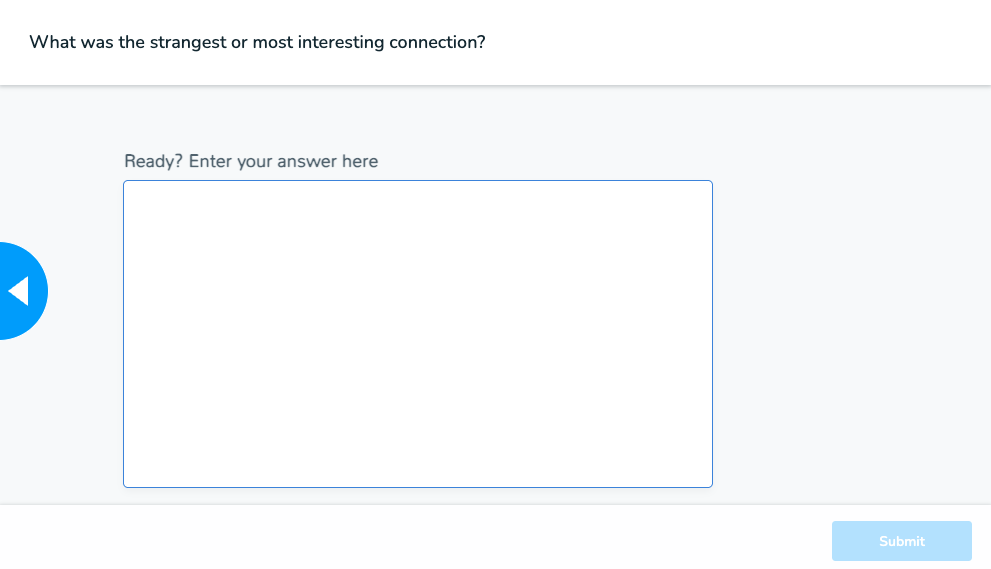
3. I am a tree
It’s always good to get students up and moving. First, form a large circle. Ask for a volunteer to go first and pose as a tree in the middle of the circle. There are only so many ways for a human to pose as a tree, so this is left up to creative interpretation. As they pose, they should say, “I am a tree.” Then, any student can jump in by adding an element to this center scene. For instance, the next person may jump in by saying, “I am a swing!” They could strike a swing-like pose (perhaps with arms up simulating how a swing might hang from a tree branch). Kids will become very creative. One might lay on the floor pretending to be the picnic blanket beneath the tree’s shade! After two additions to the tree, the first person takes out one element/one person, and the improvisation continues (see video link below). This icebreaker for high schoolers can be done over and over, with everyone’s imaginations inspired by that central tree — talk about a Giving Tree!
4. Long-lost friends
This icebreaker is best done with a larger group of high school students. Have students begin by milling about the room. Within seconds, shout out a prompt like, “You see your long-lost friend!” Your students should stop and turn to a person close to them and pretend that they are greeting someone dear they haven’t seen in ages. The more dramatic they act, the better! After about 30 seconds, have them move about again until you share another prompt. You could create a Nearpod presentation with a prompt on each slide to provide supporting visuals. Add an audio file of music to signal when students should mingle versus meet-and-greet. Other such meet-cute or introductory prompts could be:
- You see someone who you’re convinced is famous.
- You see your favorite kindergarten teacher.
- You see your rival from another [team].
5. Would you rather…?
Create a simple Nearpod multimedia presentation to play a few rounds of “This or That?” (You may be familiar with the many variations of this popular game that are popping up on social media.) Have your students form a straight line or simply stand by their desks. As you show a prompt on the slide, they should move left or right to indicate how their personal choice aligns with the two choices shown side –by side on the slides. You also could reveal results via a Poll after the students move. These icebreaker questions for teens could be thematic. You could do one about favorite foods, preferred hobbies, or study habits so that students can reflect on their own interests or preferences while learning more about the others in the room. Consider adding some reference media to your slides as needed. “Would you rather…?” is a quick (and relatively silent!) way to get students sharing personal details about their lives and themselves as individuals. Check out this list of good icebreaker questions that you can modify as needed across icebreaker activity ideas.
6. A six-word story
Put a twist on the old-school assignment of writing about one’s summer break. This time, emulate Hemingway by challenging your students to share about their summer adventures but in only six words (if you’re not familiar, check out the six-word story challenge). It can be quite a feat to sum up several weeks’ worth of activities in six words, strung together in a logical fashion. Often you will find that the six-word sentence begs for a bit more explanation, prompting students to dig deeper and ask their burning questions about the summer days gone by. If time permits, have students use Draw It to capture their six-word story and any accompanying doodles.
7. Blobs and lines
You’ll need a bit of open space for this icebreaker activity, as you will be challenging your students to make a line or form a blob based on commonalities. For instance, you might have your high schoolers line up sequentially according to birth date or ask them to form small groups — blobs — based on their favorite types of dessert. You may want to add the extra challenge of not permitting them to talk. Very quickly, students will get creative in how they use facial expressions and body language to convey their opinions and communicate with a shared goal in mind.
8. 3 is the perfect number
Break up your classroom into small groups of students. Challenge them to begin sharing things about themselves with one another until they find THREE things in common. You’ll find that the room becomes abuzz with conversation as students share out a plethora of personal details in the hopes of finding three such connections. You can support their efforts — or make it more challenging — by providing a theme. With a more abstract theme like “children’s literature,” different groups may take different directions depending on whether they dive down rabbit holes according to characters, authors, or illustrators’ artistic styles. Don’t shy away from mixing up the groups, too! Even the most diverse groups will find that they have shared interests or dislikes if they dig a bit.
9. The competition
Break up your students into small groups. Each group will have a turn at announcing a “competition” for the entire class such as the smallest foot, the longest tongue, or the quirkiest hobby. Each group then determines a “winner” within their respective group. Each group’s winner then goes to the front of the room to introduce themselves or share their winning attribute. Every winner should be met with a round of applause as the class determines the category’s “top dog.” With a new title or superlative anointed, everyone then returns to their small group, and another group leader announces the topic of the next competition.
10. Color mixer
For some rapid get-to-know-you amidst a big group, have your students mill about until you share a color by flashing a Nearpod slide of red, orange, yellow, green, blue, or purple for all to see. Then, your students should turn and talk to someone nearby according to the color’s prompt:
- RED (stop): share one (appropriate) thing that turns you off
- ORANGE (motivation): share one thing that motivates you
- YELLOW (creativity): share the best idea you’ve ever (or recently) had
- GREEN (prosperity): share one silly story that is related to money/success
- BLUE (sky’s the limit): share a fantasy about your future
- PURPLE (royalty): share what you would do or change if you were the ruler of the universe
Keep an eye on how much time is short enough to keep energy high but long enough that both people get to share. You may just want to play six rounds (one for each color), or you can call out colors more than once to prompt your students to share out different ideas with different partners. Nearpod makes it easy to design slides that can guide students throughout this icebreaker activity.
11. Categories
For a quick, energizing activity, play a few rounds of categories. Ask everyone to stand up and form a large circle. Name a topic like breakfast cereal and go around so that everyone can share a brand name. Remind them that they are out if they repeat one that has already been said (promotes active listening!) or if they simply can’t think of one. Another twist is to pick a letter and go around the circle naming a famous person whose name begins with that letter. If someone can name a person whose first AND last name starts with the chosen letter, then the direction reverses, putting the onus on the person who previously just shared.
12. Yes, and …
In keeping with building a positive classroom culture, you can use the design-thinking improvisational tool “Yes, and …” that’s popular in team-building or brainstorming activities. The goal is to build upon each other’s ideas in an expansive way versus shutting down or diverting an idea with the common “but …” You can practice adopting a “yes, and” mindset often in your classroom so that this rhetoric becomes a natural means of communication. Have students work in small groups or pairs. Start with a simple prompt like “You’re planning a 6-year-old’s birthday party.” One person will share an idea (e.g., “Let’s have red balloons …”) and then the next person will build on that idea starting with the two words, “Yes, and …” (e.g., “Yes, and let’s line the ceiling with nothing but balloons!”). See which pair or group can continue the longest. You can add elements — like everyone has a million dollars, or people can employ a bit of magic — to make the scenarios fun and fantastical. You’ll find that this type of ideation, even when borderline ridiculous, can generate some ingenious ideas in a collective fashion.
Start using Nearpod in your classroom
At the beginning of the school year, many may hear that childhood song refrain in their heads: “Getting to know you, getting to know all about you!” And while these icebreakers for high school students work well to invite them into the new year, the same activities can double as team builders, too, so share them throughout the school year; revisit your students’ favorites to bring some levity, bonding, and team building into your classroom. Leverage Nearpod to help outline directions, showcase related images, brainstorm ideas, share stories, and gather feedback. Icebreakers are not just for young students; all students (and teachers!) can benefit from the personal connections formed and developed. Make classroom and school culture a priority throughout the school year.
New to Nearpod? Teachers can sign up for free below to access these resources, interactive activities, and engaging lessons. Administrators can schedule a call with an expert to unlock the full power of Nearpod for schools and districts.

Darri Stephens is a dedicated LX (learning experience) designer, passionate about creating quality content and programs for kids, families, and educators. With MAs in Education from both Harvard and Stanford, and work experience at best-in-class ed tech organizations including Wonder Workshop, Nickelodeon, and Common Sense Education, she is steeped in the design thinking process and committed to agile and iterative project management, which has resulted in multi-award-winning programs and products.
